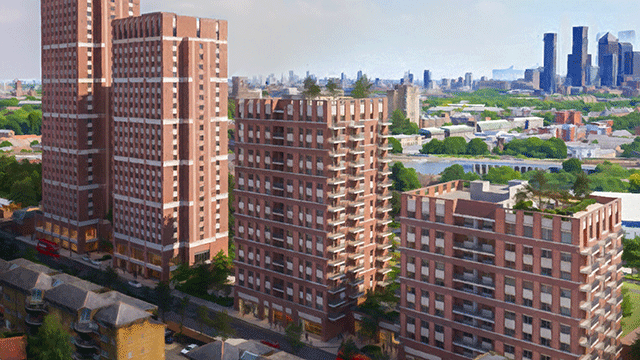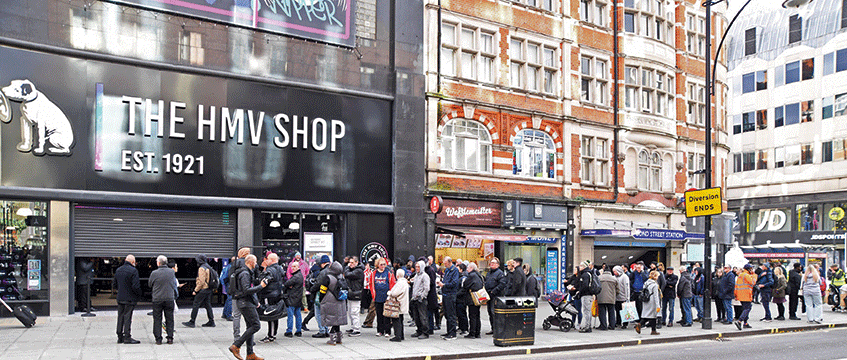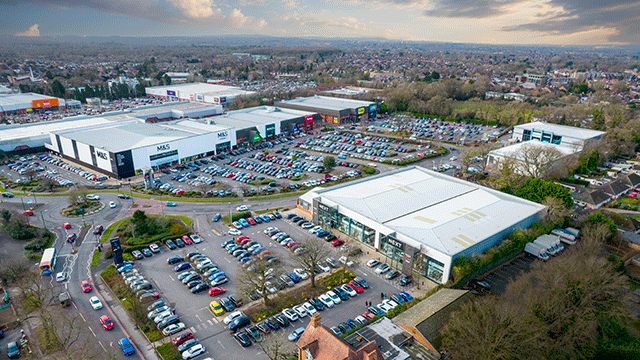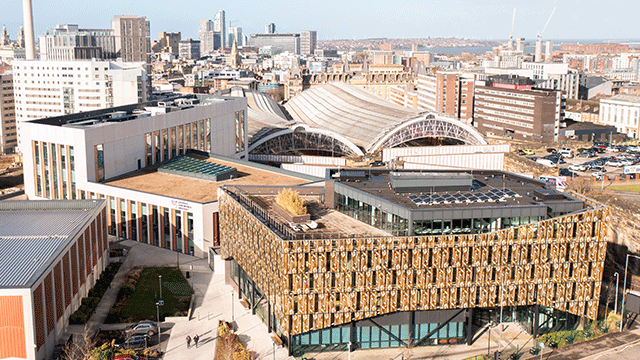Madness descended on London’s most famous shopping street last week. And that wasn’t just the 1980s pop band welcoming HMV back to Oxford Street after a four-year hiatus.
Something is changing on Oxford Street. Footfall is increasing, spend is up and demand for space is now at such a level that for the first time in a long time, property owners might just have the upper hand.
Oxford Street has long been the backbone of London’s retail scene. It has been the capital’s high street for decades, but over recent years has lost some, if not all, of its shine. Covid hit the street hard and, if you believe everything you read in some of our less expert media, the street is now full of candy stores and tacky souvenir shops. The truth, of course, is quite different.
Oxford Street is very quickly being reborn, with a fresh mix of retailers, a fresh mix of uses and a more focused curation from those that own and operate the street.
Vacancy rates are falling, more than 23 candy stores have disappeared from the street – with more to follow – some 20 new stores have opened over the past year and 22 more are under offer.
The rebirth
To understand more about the rebirth of Oxford Street, EG gathered a trio of experts – Savills’ head of global retail Sam Foyle, GPE’s head of retail Sarah Goldman and retail expert Dan Hildyard – for a behind-the-scenes tour of London’s most famous street.
While for the average punter walking down Oxford Street it may still feel like there are an abundance of empty stores, the statistics tell a very different story.
Fresh figures from Savills show an incredible reduction in vacancy rates on east Oxford Street, falling from a whopping 16% in Q2 2023 to an expected 1.1% by the end of this year.
Even west Oxford Street has seen a strong decline in vacancy rates, down from 15% in during the last quarter to 9.4% today. Looking ahead, the firm expects vacancy on the street as whole to settle at 3.6% by Q3 2024 as the former Debenhams and House of Fraser sites get redeveloped and M&G’s 134-140 Oxford Street fills.
Savills’ Foyle explains why what shoppers see on the street does not necessarily reflect what has been going on.
“There’s a big lag time on Oxford Street because deals happen but it takes six months for a retailer to open, and there are three or four months of legals. So while this negative press has been going on, a lot of deals have actually happened,” he says.
The optimism
Foyle says that over the past 12 months, a total of 20 deals have been struck on the street, with new openings from HMV, Reserved, Footasylum, Dr Martens, Samsonite and Under Armour, to name just a few.
“During Covid, there were two,” he adds. “So over the course of 18 months to two years, there were just two deals. I think that stat alone really shows what is coming.”
“There is definitely a lot more optimism from retailers,” says GPE’s Goldman. “I think people understand the investment that’s being made into the street. They are starting to see footfall coming back and, while we are not where we were pre-Covid, we’re certainly seeing that spend is back where it was, and that’s really important. The deal flow is really key.”
She says a “phenomenal” 250,000 sq ft has gone under offer over the past 12 to 18 months, which is helping bring back confidence. GPE itself has been a beneficiary of that return in confidence, letting space at its redevelopment of 70-88 Oxford Street, where it has some 40,000 sq ft to fill. Reserved, Boom: Battle Bar, Pandora and the Fragrance Shop have all agreed to take space in the building.
“The market has changed in the course of the past two months,” says Savills’ Foyle. “The speed of recovery is quite extraordinary.”
He cites properties that he has been advising on where there have not been any viewings for six to nine months now having to go to best bids with retailers.
“That has been unheard of over the course of the last three years,” he says. “Landlords have now got choice with brands. There have been some situations of some 10-year leases being offered on particular buildings.
“The whole dynamic of the relationship has now started to change from it being a purely tenant market, where they were able to really drive those terms, toward what I would call it a genuine partnership where, for the landlord with the right brand, the right deals are being done.”
The proof
With HMV back and the big blue and yellow hoardings around the former Topshop block expected to be replaced with an 82,000 sq ft Ikea store in autumn next year, the narrative around Oxford Street really is starting to change.
For Foyle, this has been enabled by the much-needed reduction in rates, which are down by 40% on the west of the street and by 35% on the east. That reduction in cost has opened up the street to new occupiers and Westminster City Council’s new flexibility around different use types is encouraging different concepts to the street. The icing on the cake now, he says, will be when the political challenges are swept aside and proper placemaking can happen, with wider pavements and a nicer, more accessible area outside the shops.
Hildyard remains confident that Oxford Street’s evolution will come.
“It’s going through a change which it has done many, many times before, and it will do it again,” he says. “The problem is that the change takes time. There are three or four huge developments on Oxford Street, which are currently big holes on the street. You look at Ikea or House of Fraser or Debenhams and they are blank spaces. But really we have always known the potential of what is there.”
And that potential, it appears, is now starting to be realised.
To send feedback, e-mail samantha.mcclary@eg.co.uk or tweet @samanthamcclary or @EGPropertyNews











